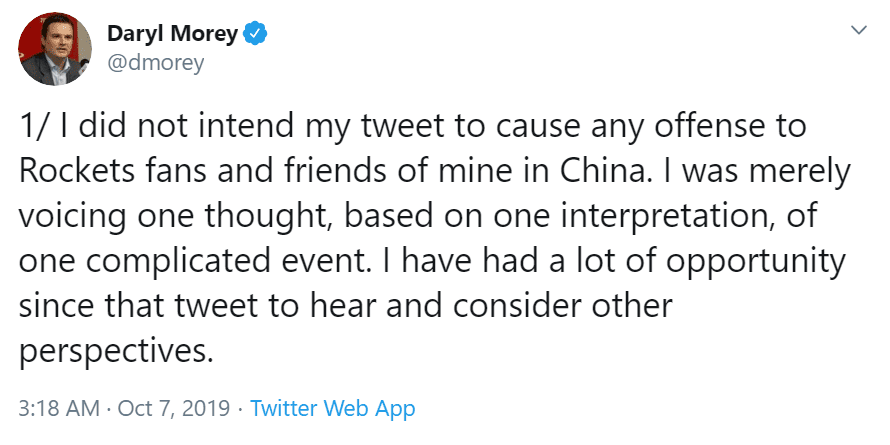This post originally appeared on the Foundant blog.
Infuriating character counts. Confusing budget templates. Repetitive questions in different sections. Playing with the budget numbers so as not to exceed the 15% overhead limit. Rewriting your boilerplate language because this application form is different from all the other application forms you’ve seen. Those freaking character counts!
Frustrated, tired and aggravated, you get a tiny thrill from clicking the “submit” button ten minutes before the deadline. You did it: Another grant application submitted. And now you wait.
The ball is in the foundation’s court. What will they do now?
A Partnership Is More Than an Application
I have worked on both sides of the table: I have been a grant writer and fundraiser for a number of organizations and I was a global communications director for a private family foundation. I had the chance to see how “the other half” lives.
Here’s a not so private secret: Foundations aren’t just reading your submitted application. Their program officers and staff are checking you out elsewhere.
A grant isn’t just a bank transfer. For a foundation, it’s a partnership with an organization whose values align with theirs. The foundation therefore has to make sure they are partnering with a reputable, upstanding nonprofit. The goal becomes for you and the foundation to further your respective missions through this grant.
How does a foundation learn more about you in addition to what’s listed on your application? There’s a reason they ask for your website, social media handles and more on the application. Here are a few platforms and outlets they may be checking to learn more about you:
Website
This is the obvious one. What is the foundation looking for?
- More information about your mission, goals, successes and operations than will fit on the application form. Thankfully your website doesn’t have a character count limit!
- Foundation representatives are like regular donors. They want to learn more, be moved, understand how community members benefit from your activities. Is your website imparting that information to them?
- How does your nonprofit recognize its donor partners? Are they listed on the homepage and elsewhere on the site? Are they given recognition and properly thanked?
- How diversified is your fundraising portfolio? Does your organization only rely on foundation support or do you have corporate partners, event donors, individual donors and more? Some foundations may not want to be the sole supporters of your programming. They want to know your team is out there soliciting other donations to service as many people as possible.
Social Media
Social media allows the foundation to learn more about your activities and programming. They can view posts, pictures and videos. Just like your website, they can scan and see whether you give recognition to funding partners. How do you celebrate them.
Not every foundation wants a public thank you. But unless you are explicitly told to avoid doing so, all your funding partners should be publicly lauded. That could be a tweet that tags the foundation, a picture of the foundation’s logo on Instagram thanking them for their support or maybe a quick video posted to Facebook by your CEO or a beneficiary of your services thanking the foundation for its support.
I’ll add this: People want to be part of a success story. If they see that foundation X has vetted you and is supporting you, then others will want to join. Social media provides the perfect outlet for showcasing who your foundation partners are.
Email Marketing
For some of you this might be a stretch but keep in mind: There’s a lot of money (and the foundation’s reputation) on the line. Some program officers may actually subscribe to your e-newsletter to learn more about you.
This goes back to the previous two sections: How are you telling your story to your subscribers? How are you recognizing donors and partners? How are you strengthening relationships with readers and converting them into donors?
When you work on your content strategy and specifically your email marketing strategy, you need to consider all your potential audiences. Foundation employees should be in the mix.
Media Scan
Many foundations, especially family ones, do not run after public recognition. They are philanthropic and generous but prefer to keep it quiet. However, there are those foundations that do want you to get the word out about their grant.
Program officers use Google too. If they don’t find links on your website, they’ll be searching for articles about your organization. Do those articles quote your staff and if so, are staff members thanking donation partners? Do your press releases include a quote from foundation partner representatives?
An article in local or national media helps get the word out about your activities but also helps people learn about your funding partners. Potential funders may be looking for this.
As a former communications director for a foundation which WANTED media coverage for the issues it advocated for, I always performed a media scan when a new partner was being discussed. Besides the above, I was also scanning for the bad news: Has the organization been involved in any scandals? Have there been negative news stories published about them?
A foundation has a reputation to uphold, especially when it’s a family or corporate foundation. Bad news stories about potential grantees are going to give them pause. Be prepared to answer questions without hiding from the truth.
What Story Does Google Tell?
On the grant application your organization puts its best foot forward. Your mission, answers, budget all tell a positive story of the impact your activities have on those who benefit from your services.
How about Google? What will the foundation find out about you if they Google your organization’s name? Google your CEO and leadership team?
Come to think of it, when’s the last time YOU googled your organization and its leaders? Do you know what’s out there?
Looking Outside The Application
Before you submit a proposal for funding, make sure you review all your various online (and offline) outlets and platforms. Improve the chances of getting a positive response to your application by ensuring that everything is up to date and provides a full picture.
Because the Internet remembers all. It is unforgiving. Just like those annoying character counts.
Year-end fundraising campaign time approaches. Is your website content prepared? Email marketing strategy ready to be implemented? Social media posts planned out? If your nonprofit wants to strengthen relationships with donors and raise more money, then your website, email and social media need to be in sync and ready to go when your campaign commences.
Not sure how to pull it all together? Contact me and let’s plan a successful year-end campaign together!




